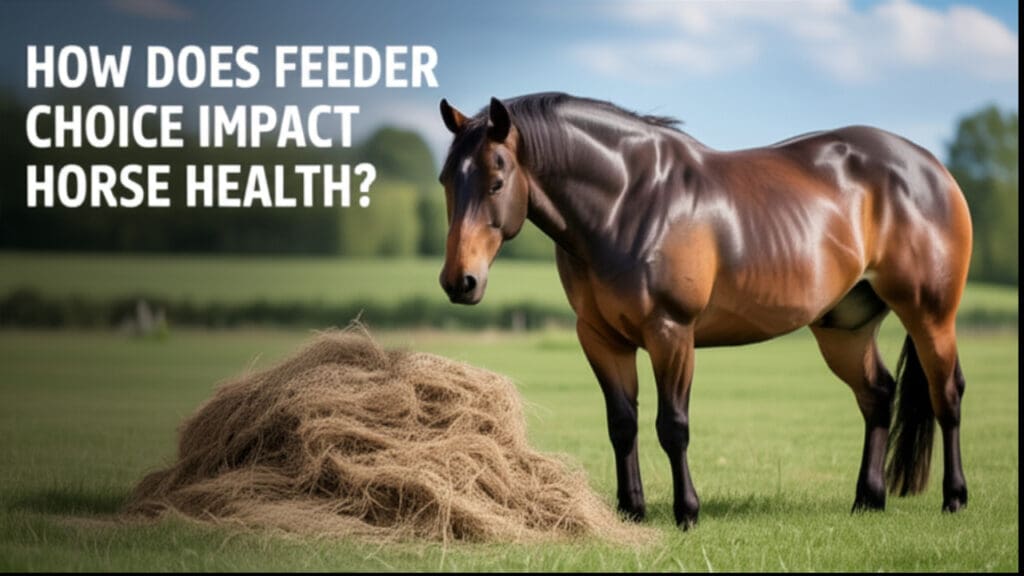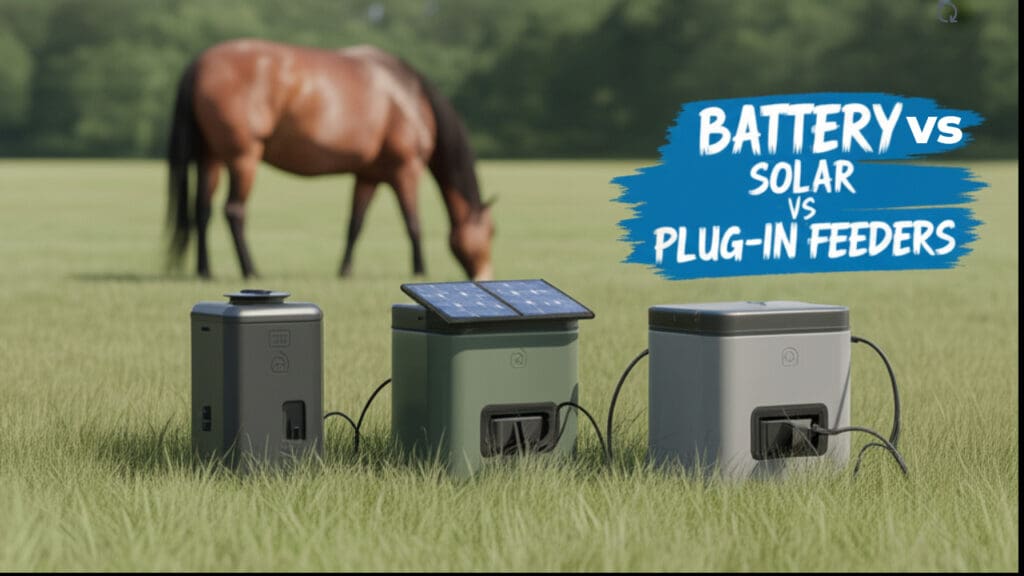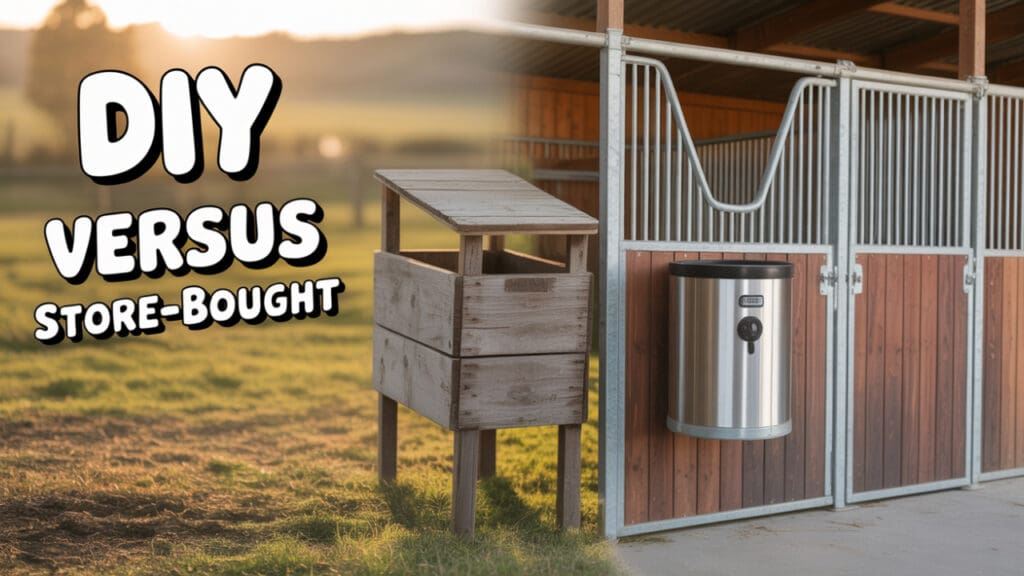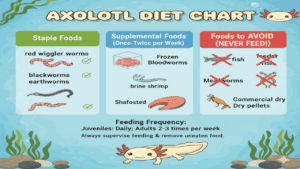Auto Horse Feeder Buying Guide (2025): Expert Tips on Setup, Power Sources, Portion Control, and Common Mistakes
Imagine stepping into your barn one morning only to discover your horse missed an overnight feeding because the timer on your makeshift feeder failed.
If you’re one of those horse owners seeking consistency, health, and peace of mind, choosing the right auto horse feeder is more than a convenience. It’s a commitment to better care.
The right model can portion feed with precision, withstand harsh weather, and even operate off-grid with solar or battery backup.
But as we’ve noticed, most buyers underestimate how feeder capacity, power source reliability, and outdoor durability affect long-term performance and cost.
Here, you’ll discover why equine vets favor programmable feeders for horses with metabolic issues, how spending between $350 and $700 typically nets the best balance of features and reliability, and why DIY options (while tempting) can lead to overfeeding, jamming, or worse, without careful calibration.
By the end, you’ll know exactly what to look for (and what to avoid) so you can invest confidently in a system that fits your barn, your horse, and your budget.
Find Your Ideal Auto Horse Feeder
Take this quick quiz to discover the perfect feeding solution for your barn
What's your PRIMARY concern with feeding?
Where will the feeder be located?
What's your power source situation?
How many horses need feeding?
What's your budget range?
Your Ideal Auto Feeder Recommendation
Programmable Smart Feeder
Recommended Models
What Type of Auto Horse Feeder Is Right for Your Barn Setup?

Choosing the right auto horse feeder for your barn setup isn’t just about convenience. It’s about ensuring your horse’s safety, health, and feeding consistency.
With options ranging from basic gravity feeders to sophisticated programmable systems, understanding what works best in your environment is the key to making a smart investment.
Let’s break it down. Gravity horse feeders are the most affordable and simplest to operate. These rely on basic refill mechanics. The feed flows downward as your horse eats.
They’re a solid fit for enclosed stall setups or barns with consistent manual oversight. However, they do not offer portion control and are not ideal for horses prone to overeating.
Programmable or electric horse feeders, on the other hand, are designed for timed, measured feedings. These are perfect for barns where consistent routines are crucial and where caretakers may not always be present.
You can set them to dispense feed at precise intervals, which is essential for managing weight, preventing ulcers, or caring for performance horses. But… if your barn lacks access to reliable electricity or Wi-Fi, a high-tech remote horse feeding system may cause more hassle than help.
Equine vets say that feeder choice should align with both your infrastructure and your horse’s health profile.
For example, some horses with dental issues or behavioral quirks may do better with feeders that accommodate soaked feeds or slow-feeding inserts. These are features not found in cheaper models.
Cost also varies significantly. A basic gravity feeder can cost under $100. But programmable auto feeders with built-in backup batteries or Wi-Fi syncing can range from $300 to over $1,000.
You should also consider the Installation complexity. Stall-mounted feeders are great for permanent setups, while portable bin feeders work better for rotating pastures.
A little confused? Keep reading then. We’ll explore how feeding capacity and portion control affect your horse’s well-being and how to avoid common feeding mistakes.
7 Real Benefits That Smart Barn Managers Count On
1. Helps Prevent Stomach Ulcers
Feeding horses more often (four or more times a day) could lower the risk of painful stomach ulcers. Some studies even show that it can cut ulcer severity in half.
2. Saves Time and Effort
Automatic feeding systems can handle most of the feeding work. Many barns say they save up to 90% of the time usually spent on feeding.
3. Reduces Feed Waste
Traditional feeding often leads to spilled or leftover feed. Automatic feeders can cut down waste by 20 to 40%, saving money and resources.
4. Works in All Weather
High-quality feeding systems are built to work even in extreme temperatures, from freezing cold to very hot weather – as long as the battery is managed properly.
5. Improves Horse Behavior
Horses fed in small, regular amounts tend to be calmer and show fewer signs of stress or aggression.
6. Supports Health Conditions
Automatic feeders can give just the right amount of food for horses with special needs, like those with insulin issues or other metabolic concerns.
7. Lets You Monitor from Anywhere
Newer feeding systems can send alerts to your phone and track how much your horse is eating, even when you’re not at the barn.
How Portion Control and Feeding Capacity Affect Your Horse’s Health
Ever wonder why some horses thrive on automatic feeders while others develop health issues? The answer often comes down to two overlooked factors: portion control and feeding capacity.
These elements don’t just affect convenience. They directly impact digestive health, weight management, and behavioral stability.
Let’s start with portion control. Horses are natural grazers, designed to eat small amounts throughout the day. Overfeeding, especially with grains or rich pellets, can lead to colic, laminitis, or even aggressive stall behavior.
A programmable horse feeder allows precise portioning at set intervals, mimicking a more natural feeding pattern. This reduces the risk of metabolic imbalances and keeps your horse’s gut in healthier condition.
Many high-end models include dual compartments for hay and grain. This helps you manage mixed diets with ease.
Now, let’s talk capacity. A large auto horse grain feeder might seem ideal for reducing refills. But it can actually backfire if not paired with timed release.
Feeders that dump large volumes without control may cause binge-eating, food spoilage, and wasted feed. These might all translate to higher long-term costs and potential vet bills.
The best horse grain dispensers strike a balance. They store enough to cover multiple days, but only release what’s needed at each feeding.
Equine nutritionists mention that feeding consistency is just as important as feed quality. Whether you’re using a stall feeder system or a remote horse feeding setup, make sure your feeder supports consistent meal timing and volume accuracy.
You going DIY? Great! But you’ll need to manually calibrate your setup to avoid over- or underfeeding, especially with high-energy grain mixes.
Ultimately, smart portion control and matched capacity lead to fewer digestive issues, a more relaxed horse, and lower feed waste.
Do you want to avoid costly mistakes in your feeder setup? Stay tuned! Our next section dives into how power source and reliability can make or break your daily routine.
Power Sources and Reliability: Choosing Between Battery, Solar, or Plug-In Feeders

When it comes to auto horse feeders, the power source isn’t just a technical detail. It can really make or break the system’s reliability, especially if you’re managing a busy barn or remote pasture.
So, which is best for your setup: battery-powered, solar, or plug-in?
Let’s break it down. Plug-in feeders offer consistent performance, especially for programmable horse feeder systems that require precise timing.
They’re typically the most powerful and feature-rich, often allowing for multiple feeding schedules, backup alerts, and even remote control access. That said, they depend on access to a stable power supply, which isn’t always available in barns or outdoor paddocks.
If your facility lacks electrical outlets near feeding areas, running cables or installing new lines can add hundreds of dollars to your installation cost.
Battery-powered feeders are incredibly versatile. They’re great for barns without electrical access or for owners who want a mobile setup. Most models use standard rechargeable batteries and can run several weeks on a single charge.
The downside? When the battery dies unexpectedly, your horse could miss a meal, or worse, get an accidental double dose. To avoid that, you should look for models with low-battery alerts or built-in backup features.
See, solar-powered auto horse feeders are gaining traction for good reason. They offer off-grid reliability and eco-friendly operation, particularly valuable in pasture setups.
But not all solar feeders are created equal. Some cheaper models underperform in cloudy weather or fail to store enough energy, leading to inconsistent feed times.
Experts recommend choosing units with robust solar panels and lithium battery storage to ensure dependable function year-round.
So what’s the bottom line? Choose your power source based on your barn’s infrastructure, your climate, and how much tech support you want. If you’re unsure, hybrid models that combine solar and battery backup offer a smart middle ground.
| Power Type | Battery Life in Cold Weather (20°F) | Battery Life in Hot Weather (90°F+) | Yearly Cost (Approx.) |
| Lithium-Ion + Solar | Lasts about 1 to 1.5 months | Lasts about 1.5 to 2 months | $25 to $40 |
| Lead-Acid Backup | Lasts about 1 to 2 weeks | Lasts about 1.5 to 2 weeks | $60 to $90 |
| Plug-In Power | Depends on weather | Always works (if plugged in) | $120 to $180 |
Up next, we’ll explore the pros and cons of DIY versus store-bought feeders. Stay with us!
What to Know About DIY Auto Horse Feeder Options vs. Store-Bought Models

If you’re a hands-on horse owner, building a DIY auto horse feeder might seem like the perfect weekend project.
But before you grab that power drill, it’s important to weigh the benefits (and of course, the potential pitfalls) of homemade feeders versus commercially available systems.
DIY feeders have clear appeal. They’re often cheaper upfront, customizable to your barn layout, and satisfying for those who enjoy building things from scratch.
With basic materials like PVC piping, timers, and feed bins, you can assemble a functional auto feeder for well under $100. Plus, you can tailor the feeder for specific needs, like slow-release hay nets or pellet dispensing chutes.
Having said that, reliability is the tradeoff. Without precision-calibrated mechanisms, homemade feeders could (most likely would) misfire, jam, or dispense inconsistent portions, putting your horse at risk of overfeeding or missed meals.
Store-bought models, by contrast, are engineered for consistent performance. Programmable horse feeders come with built-in timers, reinforced bins, and even smart features like remote controls or low-feed alerts.
Yes, they do cost more. We’d say anywhere from $250 to $900 depending on brand and features. But you’re paying for peace of mind, vet-tested designs, and warranty support.
Most equine care specialists agree that professionally manufactured feeders are generally safer for horses prone to chewing, pawing, or anxious behavior.
So, what does this mean for you? If you only need short-term feeding support or have highly specific needs not met by commercial feeders, a well-built DIY auto horse feeder could work, especially in combination with manual checks.
But for long-term reliability and precision feeding, a store-bought auto horse grain feeder is often the smarter investment.
Still comparing options? Next, we’ll look at how durability and weather resistance factor into your feeder’s lifespan, especially if your setup includes outdoor pastures or open barns.
Weather Resistance and Durability: Can Your Feeder Handle the Outdoors?
Leaving an auto horse feeder exposed to the elements without understanding its weather resistance can lead to costly breakdowns. And this could very well impact your horse’s feeding routine.
So before setting up in an outdoor paddock or open barn, ask yourself: Can your feeder truly withstand the environment?
Durability starts with materials. High-quality feeders designed for outdoor use typically feature UV-resistant plastics, powder-coated steel, or weatherproof composite materials.
These components help prevent rust, warping, and brittle cracking from sun, wind, and moisture exposure. Feeders not rated for outdoor conditions (especially budget options) can deteriorate quickly, leading to feed contamination or complete failure.
Some barn management experts say that one of the most common mistakes is assuming any stall feeder system is outdoor-ready. It’s not.
Now, chances are, you’re one of those who forget about the feeder’s seal points. If the bin lid isn’t watertight, rain or humidity can cause grain to clump or mold. This not only wastes feed but poses a health risk to your horse.
Look for models with gasket-sealed lids, tight chute flaps, and elevated bases to keep feed off wet ground. Automatic hay feeders, in particular, need proper shielding or roofing to prevent waterlogged hay and microbial growth.
Cost-wise, investing in a feeder built specifically for outdoor use may run you $100-$200 more than indoor-only models. But it will last significantly longer.
Some solar-powered auto feeders even come with weatherproof housings, offering durability and self-sufficiency in pasture conditions.
Here’s what we’re saying. Don’t cut corners when it comes to weather resistance.
If your auto feeder will be exposed to rain, snow, or blazing sun, make sure it’s rated for it. Otherwise, you’re setting yourself up for breakdowns and wasted feed.
Next, we’ll answer a question many buyers ask: Do vets actually recommend using automatic feeders?
Protecting Feeders Near the Coast: How to Make Them Last Longer
If you’re using feeders near the ocean, salt in the air can wear them down quickly. But with a few easy steps, you can extend the life of your equipment by 2 to 3 times compared to untreated systems.
Easy Maintenance Plan for Coastal Areas:
- Clean Regularly
Wipe down the feeder every two weeks using a mix of vinegar and water (1 part vinegar to 4 parts water). This helps remove salt buildup and prevents damage. - Prevent Rust with Lanolin Spray
Apply a lanolin-based rust protection spray to all metal parts. It forms a shield against moisture and salt.
Cost: Around $20–$30 per application - Upgrade the Screws and Bolts
Swap standard steel fasteners for stainless steel or ceramic ones. These materials resist rust and corrosion much better.
Cost: Around $50–$75 one-time upgrade
The Result:
Feeders near the coast that follow this simple routine last 2 to 3 times longer than those that don’t.
Do Vets Recommend Automatic Feeders?
If you’re thinking about switching to an automatic horse feeder, you’re probably wondering. Do vets actually approve of them? The short answer is yes… but with some important caveats.
Many veterinarians recognize the value of auto feeders for equine health and management. But they also emphasize proper setup, feed consistency, and oversight.
Let’s start with the benefits. Vets often recommend automatic horse feeders for horses with metabolic conditions like Equine Cushing’s Disease or insulin resistance.
In these cases, consistent feeding times and controlled portions are critical. Programmable horse feeders allow owners to deliver small, precise amounts of grain or pellets multiple times a day, supporting better digestion and reducing spikes in blood sugar.
They’re also favored for horses prone to ulcers, where long gaps between meals can worsen symptoms.
Let’s look at the tricky part. Veterinarians caution against using automatic systems as a replacement for human interaction.
Horses are herd animals that benefit emotionally from regular human contact. So, a common mistake among us busy owners is assuming that installing an auto feeder means we can skip daily checks.
In reality, vets advise maintaining daily visual inspections of both the animal and the equipment. Any malfunction, like a jammed feeder or moisture-contaminated grain, can go unnoticed and compromise your horse’s health.
You should also remember that not all auto horse grain feeder models are created equal. Cheaper feeders with poor sealing or inconsistent timing can actually increase the risk of colic or overeating.
So, look for feeders that are vet-reviewed, built with food-safe materials, and offer redundancy features like backup power or manual override.
In any case, do vets recommend automatic feeders? Yes, when used properly. They’re not a shortcut. But rather a precision tool for owners who want to improve feeding consistency while still staying actively involved.
Coming up next, we’ll take a closer look at pricing tiers and how to choose a model that fits your budget without sacrificing safety.
Top Feeders Trusted by Vets for Horses
Are you looking for a feeder that’s reliable, long-lasting, and vet-approved? Here are three professional-grade options that equine veterinarians often recommend, based on performance, durability, and ease of use.
1. HayBox Pro Series – $450 to $650
- Delivers accurate portions with only a 5% margin of error
- Built to handle tough weather (rated IP65 for water and dust resistance)
- Budget tip: Costs less than $1 per day if used over 5 years
2. Schauer CombiFeed System – $800 to $1,200
- Has two compartments – one for hay and one for concentrate
- Trusted for its reliability in professional stables across Europe
3. AK-Feeder SmartFeed – $350 to $500
- Connects to a mobile app so you can monitor and control feeding remotely
- Built specifically with horse feeding needs in mind
How Much Should You Spend on an Auto Horse Grain Feeder?
When shopping for an auto horse grain feeder, price can vary dramatically. You’ll likely see numbers from under $100 to well over $1,000.
So how much should you really spend? The answer depends on your setup, the number of horses you’re feeding, and how much automation and reliability you’re expecting.
For basic use, gravity-fed feeders start at around $70 to $150. These are simple, non-electronic units that rely on feed naturally dispensing as your horse eats.
They work well in stall settings or for owners who are onsite daily. However, they don’t offer portion control or scheduling, which may result in feed waste or overeating. These issues could cost you more in vet bills or grain over time.
Now, you may think mid-range models priced between $250 and $500 are “expensive.” But these often provide the best long-term value.
These units typically include programmable timers, durable build materials, and anti-spill designs. For example, a remote horse feeding system with battery backup and portion control can drastically reduce labor costs and improve feeding precision. This makes them ideal for busy barns or owners with multiple horses.
High-end feeders, priced from $600 to $1,200+, usually add advanced features like Wi-Fi integration, app-based monitoring, dual-feed options (grain and pellets), or weatherproof construction for outdoor use.
While the upfront cost is steep, these units are engineered for heavy-duty reliability and often come with extended warranties.
We’d say that the sweet spot for most buyers lies between $350 and $700. It’s where you’ll find programmable feeders with solid reliability, enough capacity for 2-3 days of feed, and designs vetted for safety and durability.
Still unsure what’s worth your money? Up next, we’ll tackle the most common buyer questions so you can shop smart and stress-free. Keep reading.
Frequently Asked Questions About Auto Horse Feeders
If you’re still navigating the pros, cons, and pricing of an auto horse feeder, you’re not alone. There’s a lot to consider before clicking “buy” after all.
Below are the most common questions asked by fellow horse owners who want convenience without compromising their horse’s health or safety. Let’s clear up the confusion and help you make a confident decision.
1. What is the cheapest way to feed a horse?
The most budget-friendly option is a gravity feeder or hay net paired with manual grain distribution. While affordable, it requires more hands-on management and lacks portion control.
2. What are the disadvantages of automatic feeders?
Key downsides include mechanical failures, limited feed type compatibility, and the false sense of full automation. Daily monitoring is still essential.
3. Are automatic waterers good for horses?
Yes, when installed and maintained properly. They ensure consistent hydration but must be checked regularly for clogs, freezing, or malfunction.
4. What’s the best auto horse feeder for large barns?
For larger barns, programmable feeders with high-capacity bins, backup power, and app-based controls are ideal for managing multiple horses efficiently.
5. Is it safe to leave an auto feeder for a horse unattended for days?
Reliable models with portion timers and backup power can manage feedings for a few days. But experts still recommend daily visual checks.
6. What should I look for in a diy auto horse feeder setup?
Use weather-resistant materials, secure bins, and timed release mechanisms. Calibrate carefully to avoid jams, overfeeding, or moisture exposure.
7. Can an auto horse grain feeder handle pellets and textured feeds?
Many feeders work well with pellets, but sticky or textured grains may clog cheaper models. Always check the manufacturer’s feed compatibility list.
8. Do auto feeders work well in freezing temperatures?
Some models are built with insulation or heating elements. But gravity-style feeders are generally more reliable in extreme cold.
9. How often should I clean my automatic horse feeder?
At least once per week, or more frequently with molasses-based or wet feeds. Clean bins prevent mold, pests, and feed spoilage.
10. Where’s the best place to buy an auto horse feeder online?
Trusted equine retailers, Amazon, and farm supply stores offer the best selection. Look for models with verified reviews and warranty support.
What’s the Smartest Next Step for Buying an Auto Horse Feeder?
So, now you should know (enough, anyway). Choosing the right auto horse feeder comes down to matching your barn’s needs with smart, vet-backed features, like programmable portion control, weatherproof construction, and power-source reliability.
Whether you go with a $100 DIY setup or a $700 high-tech model, the key is to avoid common pitfalls like poor sealing, incompatible feed types, or inconsistent timing.
You now have the insights most buyers miss, from expert-approved configurations to the real cost sweet spot.
Ready to take the next step? Explore feeders that align with your layout, budget, and horse’s feeding behavior. Because a better feeding system means a healthier, happier horse and a lot less daily stress for you.
What’s your biggest challenge with feeding your horse? Share your experience (or even tips) in the comments down below!








